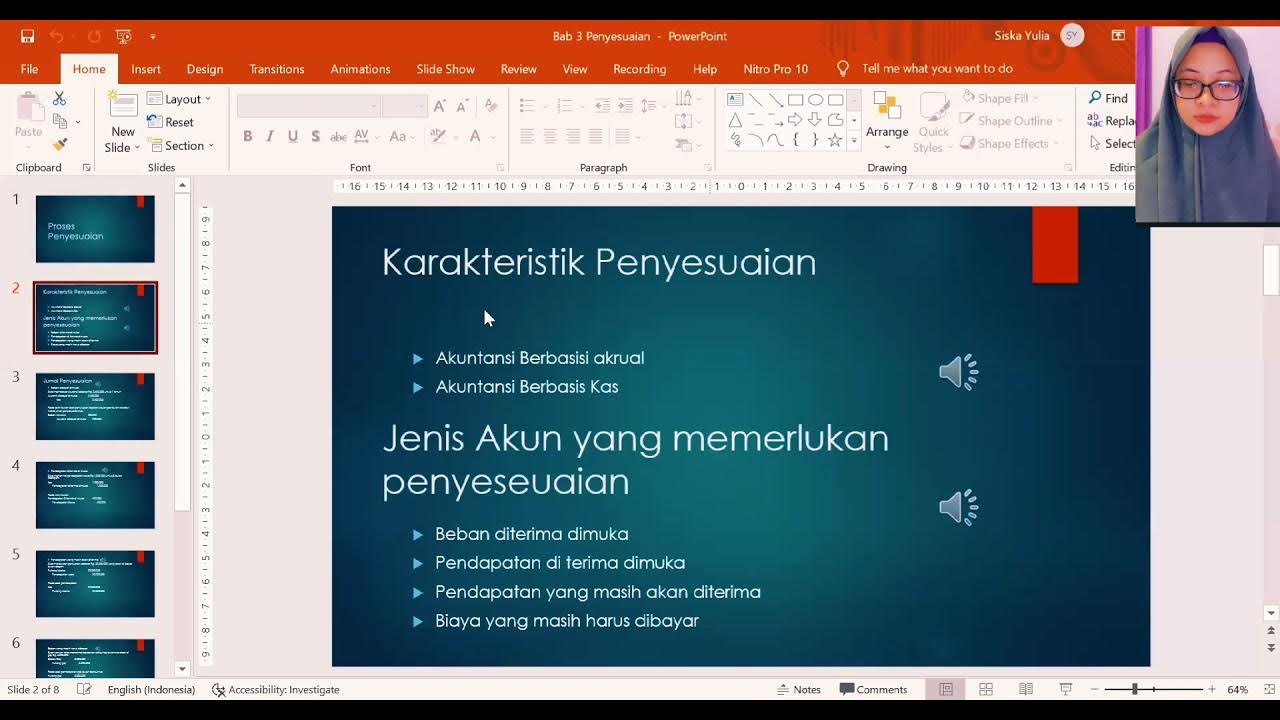Audit Biaya Bayar Dimuka
Summary
TLDRThis script provides an in-depth guide on auditing prepaid expenses and taxes. It covers topics such as prepaid insurance, prepaid rent, and prepaid taxes, explaining how to categorize and audit them based on their short-term benefits. The audit process includes verifying internal controls, checking calculations, reconciling balances with ledgers, and ensuring compliance with accounting principles. The script also details procedures for auditing, including checking supporting documents and ensuring that prepaid expenses are accurately recorded and amortized over the relevant periods.
Takeaways
- 😀 Prepaid expenses like insurance, rent, and taxes are considered current assets because their benefits last for less than a year or one accounting period.
- 😀 Prepaid insurance, prepaid rent, and prepaid taxes are examples of prepaid expenses that need to be accurately recorded and verified in audits.
- 😀 The main objective of auditing prepaid expenses is to verify the existence of good internal controls and proper accounting for expenses with future benefits.
- 😀 Prepaid taxes such as PPh and PPN should be supported by valid proof of payment and can be considered as tax credits at the end of the period.
- 😀 Auditing objectives include ensuring that prepaid expenses for future periods are correctly recorded and that expenses for the current period are accurately accounted for.
- 😀 Auditors must check whether transactions involving prepaid expenses, such as insurance or rent, are correctly recognized and classified for the appropriate period.
- 😀 A key part of the auditing procedure includes reviewing the accuracy of the general ledger, reconciling it with subsidiary accounts and prior year's work papers.
- 😀 Prepaid expenses are subject to proper amortization, and auditors must verify that amounts are allocated correctly to each period.
- 😀 The auditing process includes vouching, where auditors check supporting documents like insurance policies and rental contracts to validate the amounts recorded.
- 😀 In tax auditing, auditors must compare recorded tax values with official tax documents, such as tax returns (e.g., SPT for PPh and PPN), to ensure compliance and accuracy.
Q & A
What is the purpose of examining prepaid insurance and prepaid taxes in auditing?
-The purpose is to ensure that the internal control is effective in managing prepaid expenses and taxes, confirm that expenses for the future years are properly recorded as prepaid, and verify that taxes are backed by valid payment receipts.
What is the classification of prepaid insurance and prepaid rent in accounting?
-Both prepaid insurance and prepaid rent are classified as current assets because they provide benefits for less than or equal to one year or one accounting period, making them short-term assets.
What are the key examples of prepaid expenses mentioned in the script?
-The key examples of prepaid expenses mentioned include prepaid insurance, prepaid rent, and other expenses such as promotional advertising.
What is prepaid tax, and how is it handled in auditing?
-Prepaid tax is a tax paid by a company in advance, either monthly or deducted by a third party. It is later considered as a tax credit at the end of the year for income tax or VAT. Auditors verify that prepaid taxes are supported by valid tax receipts.
What is the first objective of auditing prepaid expenses and taxes?
-The first objective is to examine whether there is good internal control over the prepaid expenses and taxes to ensure they are accurately recorded and reported.
Why is it important to examine whether prepaid expenses have been recorded correctly for future periods?
-It is crucial to check if expenses that will benefit future periods are recorded correctly as prepaid expenses to prevent misstatements in the financial reports and ensure accurate financial planning.
What is the significance of confirming that prepaid expenses have been charged in the correct periods?
-Confirming that prepaid expenses are charged in the correct periods ensures that the expenses are accurately matched to the periods in which they benefit, adhering to the accrual accounting principle.
What procedures are involved in auditing prepaid expenses like insurance and rent?
-The procedures include obtaining detailed schedules of prepaid expenses, checking the mathematical accuracy of the calculations, reconciling balances with the general ledger, and verifying with previous year's working papers.
How does an auditor verify prepaid insurance and prepaid rent transactions?
-The auditor checks the details of the insurance and rent agreements, verifies the contract terms, calculates the annual amounts to be expensed, and ensures that the corresponding amounts are properly recorded and amortized over the period.
What should auditors look for when verifying documents for prepaid expenses like rent or insurance?
-Auditors should review contracts or policies to verify the terms, values, and duration of the agreement, ensuring the proper allocation of expenses over the appropriate accounting periods.
Outlines

此内容仅限付费用户访问。 请升级后访问。
立即升级Mindmap

此内容仅限付费用户访问。 请升级后访问。
立即升级Keywords

此内容仅限付费用户访问。 请升级后访问。
立即升级Highlights

此内容仅限付费用户访问。 请升级后访问。
立即升级Transcripts

此内容仅限付费用户访问。 请升级后访问。
立即升级5.0 / 5 (0 votes)






